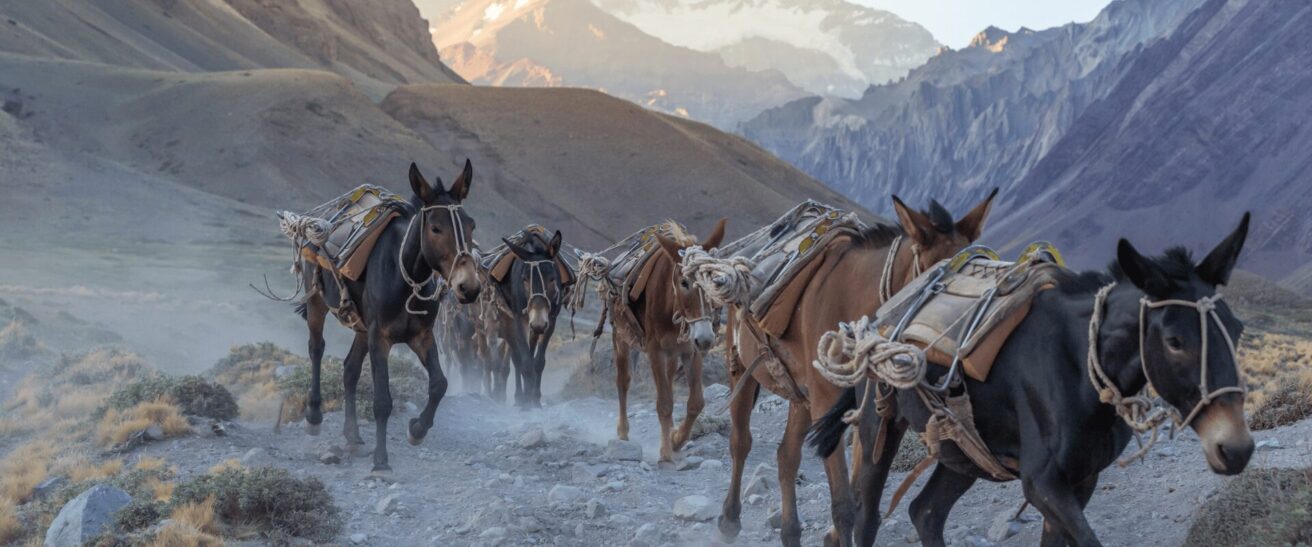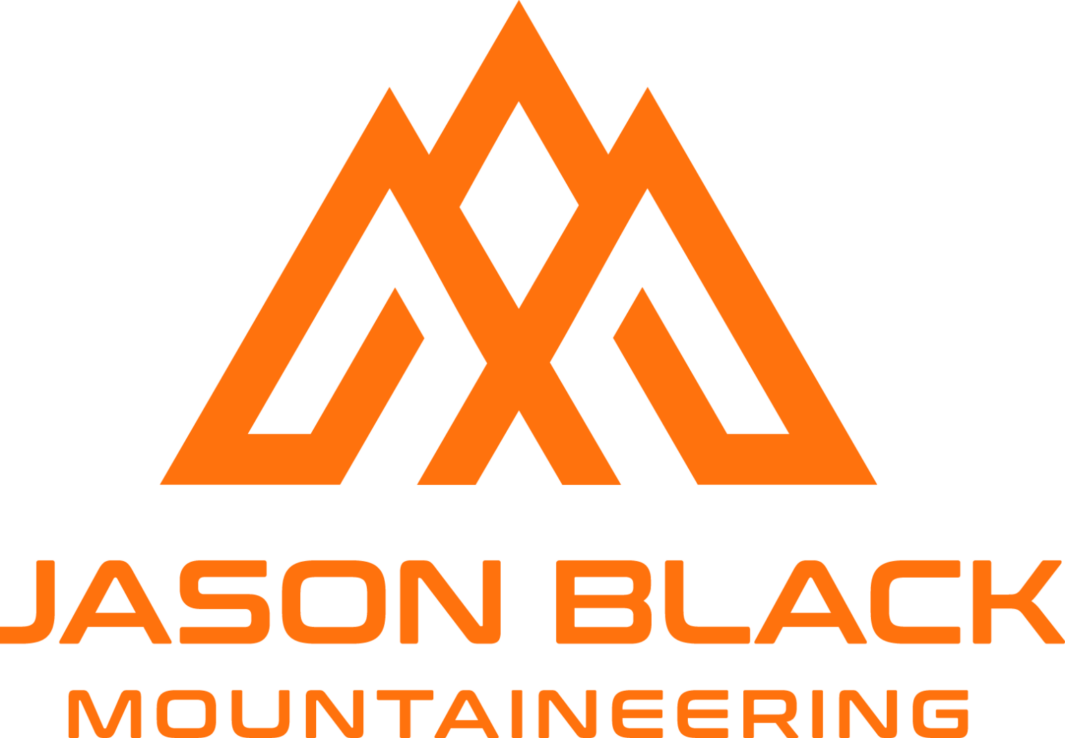
Aconcagua
Aconcagua
Argentina
19 Days
Polish Traverse
Difficult
6962 m
Approx 6-8 hrs
Aconcagua: South America’s Highest Peak At 6,962 meters (22,841 feet), Aconcagua is the tallest mountain in South America and the second highest of the Seven Summits, after Mount Everest. Located in the Andes mountain range in Argentina, near the border with Chile, Aconcagua is a dream destination for climbers and adventurers alike.
Expedition Highlights
- Our route to the summit gives our team the opportunity to climb Aconcagua on one of its most beautiful and less visited faces.
- Have the rare opportunity to traverse the mountain to both base camps on Mt. Aconcagua, Climbing from Plaza Argentina on the Polish Route to Plaza de Mulas on the Normal Route.
- Aconcagua Mountain is the highest mountain in America and is part of The 7 Summits Circuit (this consists of climbing the highest mountains of each continent).
- Our expedition programme gives you the best opportunity to succeed.
- An excellent chance to test yourself at an altitude of up to 23,000 feet, which is a great stepping stone for climbing the Himalaya mountains of 26,000 feet.
- Our expedition porters carry the group gear to the altitude camps. (tents, kitchen sets, stoves, ropes and the garbage produced for the group) This helps you to save energy to achieve your goal.
- Meet the most remarkable mike minded people from around the world.
Route Map

Trip Details
2026 Dates
Jason as lead guide – (J)
08 – 27 JAN 2026 (J)
Includes
- Exped lead guide : High altitude specialist and Aconcagua World record holder Jason Black
- Small guiding ratio to maximise summit success
- Mules of your personal equipment to/from basecamp on the expedition (25kg per person)
- Hotel accomodation 1 night before and 1 night after the climb in a 4-Star-Hotel, Accom on a shared basis.
- All meals and drinking water except in Mendoza where accommodation is based on B&B
- Base Camp Services: luxury base camp, dining tents, equipped with thermal insulation and wooden floor, electricity (220v / 50Hz), chairs, tables; living room, heating stove, small lounge.
- Communications at Base Camp: radio VHF, all communication by satellite.
- High Camps: 1 tent for 2 members
- Cooking staff: guides cook and provide hot & fresh food and drinks.
- O2 in case of emergency (emergency oxygen with summit masks and regulators).
- Porter Services for group/common gear such as tents, stoves, white gas, as well as carrying down trash and human waste
- Weather Forecast daily.
- Avalanche Forecast daily.
- Summit Certificate for Aconcagua summiteers.
Excludes
- TIPS – We recommend giving your head guide the overall tip at the end of the trip at Aconcagua Base Camp and they will make sure all all chefs, porters, mule drivers and all support staff are tipped appropriately. We recommend you tip USD $250.
- PERMITS – Climbing Permit cost $800 – $1000 and must be obtained in advance. If unused within the specified dates, the permit fee is non-refundable and will be invalid in future years. The entrance fee supports the maintenance and care of Mount Aconcagua Provincial Park, including medical services, park rangers, and helicopter rescue services.
- Expenses from Abandoning Itinerary: Additional services needed after leaving the group itinerary for any reason (personal, health, etc.) Extra hotel nights, private transfers, or other services are additional costs.
- Personal rental equipment: It is becoming more and more challenging to rent gear in Mendoza. It is expensive and never guaranteed to have the gear you need. It is much better to rent items in your home country.
- Personal Insurance: This is mandatory must inc mountaineering, heli evac and cover hospital accommodation.
- High Altitude Porters: Available to transport personal belongings between camps. The cost depends on the distance carried, porters are expensive with a basic personal 40ltr service $650.
- Extra Expenses: Specialised food or drinks not described in the itinerary, satellite phone calls, transfer fees, and other services not specified as included.
- Hot showers at basecamp $15
- Wifi at basecamp $25 for 24hrs
Gallery
Practical Info
Frequently asked questions
The following frequently asked questions may help answer any queries you have about Jason Black Mountaineering, what this expedition involves, and what is required. If your question isn’t answered here please check our dedicated Expert Advice page, otherwise don’t hesitate to get in touch.
Join the Experts!
Our experienced team can offer you personalised advice based on 25 years of experience at high altitude, ensuring that you are as prepared as possible when you arrive in Argentina. We know not everyone has access to mountains and know there is no one size that fits all approach. We know some of you will only have access to gym training.
Aconcagua does require serious training and preparation before coming on this strenuous climb and it’s time to start mapping out a training plan now.
Climbers must have prior experience of similar peaks, including significant ascents in the Andes, Alps, Rockies, Caucasus or Himalayas.
Climbing Aconcagua (6,961m) requires a high level of physical fitness, as it is one of the toughest non-technical high-altitude climbs in the world. The main challenges come from altitude, extreme weather, and long summit day rather than technical climbing skills. Here’s a breakdown of what’s needed physically:
1. Endurance & Cardiovascular Fitness
- Expect long days of hiking (6–10+ hours per day).
- The summit push can take 12–18+ hours round trip.
- Your body must sustain exertion at high altitudes with reduced oxygen levels (only ~40% of sea level oxygen at the summit).
✅ Training:
- Long hikes with a heavy pack (15–20 kg)
- Running, cycling, swimming (to build cardiovascular base)
- Stair climbing with weight
2. Strength & Load-Carrying Ability
- You’ll carry loads of 15–20 kg (33–44 lbs) to high camps.
- Terrain includes rocky trails, loose scree, and snow.
- Strong legs, core, and back are essential.
✅ Training:
- Squats, lunges, deadlifts (for leg strength)
- Core workouts (planks, Russian twists)
- Carrying a weighted pack uphill
3. High-Altitude Adaptation
- No matter how fit you are, acclimatisation is key.
- Aconcagua’s altitude can cause AMS (Acute Mountain Sickness), HAPE, or HACE if you ascend too fast.
- Even fit climbers can struggle if they don’t adapt properly.
✅ Preparation:
- Do an acclimatisation climb (e.g., Kilimanjaro, Mera peak or Island peak) before Aconcagua.
4. Mental Resilience
- Summit day is brutal—expect freezing temps (-30°C/-22°F), strong winds, and exhaustion.
- You’ll be sleeping in a tent for weeks, dealing with altitude headaches, nausea, and fatigue.
- The wind on the summit ridge can be soul-crushing.
✅ Mental Prep:
- Train in bad weather to toughen up.
- Push through long, exhausting training days.
- Simulate Aconcagua conditions: cold-weather training, multiple back-to-back hikes.
5. Recovery & Injury Prevention
- Aconcagua is long and grueling (2–3 weeks), so recovery matters.
- Your knees, ankles, and back take a beating.
- Blisters, muscle strains, and altitude sickness can derail your climb.
✅ Injury Prevention:
- Strengthen ankles and knees (step-ups, single-leg exercises).
- Train with trekking poles to reduce joint strain.
- Prioritise mobility, stretching, and foam rolling.
Minimum Fitness Benchmarks for Aconcagua
You should be able to:
✅ Hike 10+ hours with a 15–20 kg pack at high altitude
✅ Ascend 1,000m+ in a day without exhaustion
✅ Maintain a resting heart rate below 60 bpm (a sign of solid cardio fitness)
✅ Complete a 30-minute stair climb with a 20 kg pack without stopping
✅ Run 10 km in under 50 minutes (optional, but a good fitness indicator)
Who Should NOT Attempt Aconcagua?
🚫 If you can’t carry a 15+ kg pack for several days
🚫 If you haven’t trained for long endurance hikes
🚫 If you have no high-altitude experience (unless on a well-planned itinerary)
🚫 If you struggle in cold, extreme conditions
Final Thoughts
Aconcagua is not technical but brutally demanding. Many fit people fail due to altitude and weather. If you’re already comfortable at 5,000m+ and have solid endurance, strength, and mental toughness, you stand a good chance.
Would you like a specific training plan for Aconcagua? Let me know your fitness level, and I’ll help!
Here is our carefully designed Jason Black Mountaineering 12-week structured training plan for Aconcagua, designed to build endurance, strength, altitude preparedness, and mental toughness.
Adjust based on your current fitness level and experience.
Aconcagua Training Plan (12 Weeks)
Goal: Build endurance, strength, and altitude adaptation to handle long climbs with a heavy pack.
✅ Weekly Schedule Overview
|
Day |
Activity |
|
Monday |
Strength Training + Stair Climb with Pack |
|
Tuesday |
Cardio (Running/Cycling) + Core |
|
Wednesday |
Weighted Hike (8–15 km) |
|
Thursday |
Strength + Endurance (Stair Climbs, Step-ups) |
|
Friday |
Rest or Light Recovery (Yoga, Stretching) |
|
Saturday |
Long Hike (15–25 km, 1,000m elevation gain) |
|
Sunday |
Cross-Training (Swimming, Cycling) or Active Recovery |
Phase 1 (Weeks 1–4): Base Building
Goal: Build cardio endurance, leg strength, and pack-carrying ability.
✅ Hiking:
- 8–12 km (5–7 miles) with a 10 kg pack
- 600–800m elevation gain
- 3–4 hours duration
✅ Strength Training (2x per week)
- Squats – 4 sets of 8
- Lunges – 3 sets of 10 per leg
- Deadlifts – 4 sets of 6
- Step-ups (Box 45 cm) – 3 sets of 12 per leg (with a weighted pack)
- Planks – 3 x 1 min
- Pull-ups – 3 sets of 6
✅ Cardio Training
- 45–60 min runs at moderate pace
- 30 min stair climb with a 5 kg pack
- Cycling/swimming for active recovery
✅ Mental Prep
- Train in bad weather (rain, wind, cold)
- Hike on rough terrain
Phase 2 (Weeks 5–8): Strength & Endurance Boost
Goal: Increase hiking difficulty, pack weight, and elevation gain.
✅ Hiking:
- 12–18 km (7–11 miles) with a 12–15 kg pack
- 800–1,200m elevation gain
- Summit a local peak (if possible)
✅ Strength Training (2x per week)
- Increase weights for squats, lunges, deadlifts
- Farmer’s carry (15–20 kg each hand) – 3 sets of 30m
- Stair climbing (40+ min with a 10 kg pack)
✅ Cardio & Endurance
- 1 x interval running session (5x 3 min fast, 3 min slow)
- 60+ min continuous running or cycling
- Rowing or swimming (good for lung capacity)
✅ Mental Training
- Simulate summit conditions: hike while fasting for part of the day
- Sleep in a tent on weekends
- Push through long back-to-back training days
Phase 3 (Weeks 9–12): Peak Performance & Altitude Prep
Goal: Final simulated climbs, heavy loads, and max endurance.
✅ Hiking (Most Important)
- 20+ km (12+ miles) with a 15–20 kg pack
- 1,200–1,500m elevation gain
- 6–8 hours duration
- Back-to-back long hikes (Sat & Sun) for real fatigue training
✅ Strength & Endurance Training
- Stair Climbing (45–60 min with 15 kg pack)
- Bulgarian Split Squats – 3 sets of 10 per leg
- Dead Hangs – 3 sets of 30 sec (for grip strength)
✅ Altitude & Cold Exposure
- If possible, train at altitude or use a hypoxic training mask
- Spend time in cold weather gear to adapt
✅ Mental Prep
- Simulate summit day: Start a long hike before sunrise with limited food/water
- Sleep in high-altitude environments (if possible)
- Long stair workouts at the end of the day (simulate exhaustion)
Final Prep (Last 2 Weeks)
🔹 Reduce heavy training (Tapering)
🔹 Focus on sleep, stretching, and light hikes
🔹 Pack & gear test (Fully loaded backpack, boots, and summit gear)
🔹 Simulate high-altitude breathing (practice slow, deep breaths)
Key Training Tips
✔ Train with your backpack & boots early!
✔ Use trekking poles for stair climbs and hikes
✔ Hydration & nutrition practice – Know what fuels you best
✔ Recovery matters! – Foam roll, stretch, and prioritise sleep
✔ Train in extreme conditions (rain, snow, wind, heat)
Are You Ready for Aconcagua?
✅ Can you hike 1,500m+ with a 15 kg pack?
✅ Can you handle 8–10 hour hikes back-to-back?
✅ Have you trained in cold, high-wind conditions?
✅ Do you feel mentally prepared for suffering?
If you can check all the boxes, you’re in solid shape! Let me know if you want customised adjustments based on your current fitness level!
Travel Documents
Passport 6mts Valid
Debit/Credit Cards
Insurance Papers
Photocopy of passport
Base Layers
Merino Wool Underwear (4 pcs)
Merino long sleeve base layer (2 pcs)
Merino long pants base layer (1 pcs)
Merino Short Sleeve T Shirt (2 pcs)
Mid Layers
Tech Fleece (1pcs)
Tech fleece with hood (1pcs)
Heavyweight Hiking Pants (1pcs)
Lightweight Hiking Pants (2pcs)
Windproof/Rain Layers
Hard Shell Jacket (1pcs)
Hard Shell Pants (1pcs)
Insulation Layers
800+gram Goose Down Jacket with hood
Insulated Pants
Lite puffer Jacket
Headwear
Warm Hat (2pcs)
Balaclava (1pcs)
Baseball Cap (1pcs)
Bandana or Buff (2pcs)
Eyewear
Cat 4 Glacier Glasses
UV Nose protector
Ski Goggles
Gloves
Lightweight Liner Gloves
Shell Guide Glove with Insulated Liner
7000m Expedition Mitts
Footwear
Liner Socks (3 pairs)
Wool or Synthetic Socks (3 pairs)
Double Skin Mountaineering Boots 7000m (Kailas /
Lasportiva / Millet)
Trekking Approach Shoes
Camp Booties (optional)
Gaiters (optional)
Sleeping Equipment
Sleeping Bag -30°C
Inflatable Sleeping Pad
Closed-cell Foam Pad
Earplugs
Inflatable Pillow
Mountaineering Gear
Large 120ltr Duffel Bag
Expedition Backpack 75L+ for above basecamp
Trekking Backpack 30L
Trekking poles (optional)
Ice Axe (2pcs)
Crampons
Headlight 500-700 Lumens (2pcs)
Travel Items
Small hotel Duffel Bag
Travel Clothes
Cash
Visa Card
ATM card
Additional Food Items
Snack food
Salty-sweet bars
Summit gels
Nuts
Beef jerky
Medical
Personal First-aid kit
Compeed blister packs
Sutures & steri strips
Ibuprofen
Paracetamol
250mg Diamox 20days
Medicated throat lozenges
Medicated throat spray
Antibiotic Azithromycin 500mg
Laxatives
Imodium
Mosquito repellent
Menstrual products
Electrolytes
Nail cutter
Duck tape – Repair Kit
Hand & Feet chemical warmers
Toiletries (Personal)
Toilet Paper
Toothpaste &Toothbrush
Bio Baby wipes (2pcs)
Soap
Shampoo
Shaver
Towel
Small nail-brush
Sunscreen: SPF 50
Lip Screen: SPF 30
Aftersun
Additional Items
Compression Stuff Sacks
Plastic Cup (high camps)
Plastic Bowl (high camps)
Plastic Spoon (high camp)
Water Bottles 1- litre (3pcs)
Thermos 1- litre
Pee Bottle 1- litre
Female Urination Device (FUD)
Knife or Multi-tool (optional)
Optional Electronics
Country-appropriate power adapters
Avalanche Transceiver
Adventure Sports Watch
GPS/ Garmin inReach Mini
Sherpa 100AC Power Bank
Phone camera
Batteries
Charging leads
You may pay your deposit and balance using any lawful means. If sending money by electronic bank transfer then you will be responsible for covering the cost of the fees associated with the transfer, so that the company receives the full amount shown on your invoice, in the denomination shown on your invoice.
See more about our payment policy Here
On Booking your expedition our returns policy can be viewed here

We recommend Global Rescue
This is Mandatory and you will not receive your permit to climb from the National park rangers until you show proof of Insurance for up to 7,000 meters at the park gate apron entry.
It is your responsibility to ensure that you have sufficient personal travel insurance for this expedition. Your policy must provide cover for; a) medical injury or sickness b) trekking up to 7,000 meters (c) helicopter evacuation in an emergency situation, and d) repatriation to one’s country of residence. You must declare any pre-existing medical conditions to your insurers and ensure you receive written confirmation that any pre-existing medical conditions are fully insured. We advise you to obtain travel insurance as soon as you book, that will cover you for unforeseeable circumstances such as illness or injury that might result in you not being able to take part in your expedition.
1. Medical injury or sickness
2. Mountaineering above 5,000 metres
3. Helicopter evacuation in an emergency situation
4. Repatriation to country of residence.












